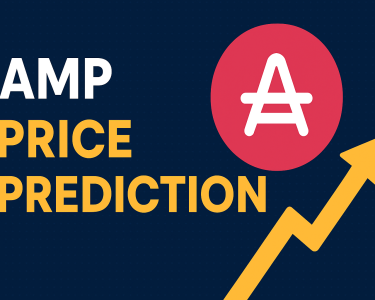Open banking is transforming the way financial services are provided by Open Banking Future allowing consumers and businesses to share their financial data securely with third-party providers. This new approach is revolutionizing the traditional banking system, providing consumers with more control over their financial information and enabling greater innovation in financial services.
In this article, we will explore what open banking is, how it works, its benefits and risks, and its future potential in reshaping the financial industry.
What Is Open Banking?
Open banking refers to the practice of allowing third-party financial service providers, such as fintech companies, to access consumer banking, transaction, and other financial data through the use of application programming interfaces (APIs). With the consent of customers, these third parties can develop personalized financial products, payment solutions, and other services to enhance user experience.
Banks are required to share data with licensed and regulated third parties in a secure manner. This model contrasts with the traditional approach where banks hold customers’ data exclusively and do not share it with external providers unless legally mandated to do so.
Key Components of Open Banking
- APIs (Application Programming Interfaces): APIs are the backbone of open banking. They allow banks and third parties to exchange data securely, facilitating collaboration between different service providers.
- Consumer Consent: Customers must give explicit consent for their data to be shared, ensuring that they have control over who accesses their financial information.
- Regulation: Many regions, such as the European Union (with the PSD2 directive) and the UK, have introduced regulatory frameworks to govern open banking. These regulations ensure security and privacy while encouraging innovation.
How Open Banking Works
The open banking ecosystem relies on a network of banks, third-party service providers, and customers. Here’s a simplified explanation of how it works:
- Customer Consent: A customer decides to share their financial data with a third-party provider (such as a budgeting app) by giving their consent.
- Data Access via APIs: The bank, where the customer holds their account, uses an API to securely share the requested data with the third-party provider. This data may include transaction history, account balances, and other relevant financial information.
- Personalized Services: The third-party provider uses this data to offer tailored services, such as financial management tools, loan recommendations, or payment processing, that benefit the customer.
This system creates a more interconnected and competitive financial landscape, empowering customers to have more choices and access to better financial services.
Benefits of Open Banking

1. Enhanced Customer Experience
Open banking offers customers access to innovative services that can improve their financial decision-making. For example, financial management apps can aggregate information from multiple accounts and offer insights into spending habits, savings goals, and investment strategies. This provides users with a comprehensive view of their financial health.
2. Increased Competition and Innovation
By opening up financial data, new fintech companies can enter the market and offer services that traditional banks may not provide. This increased competition drives innovation, leading to better, more diverse financial products for consumers. Whether it’s streamlined loan applications or more advanced payment methods, open banking fosters an environment of constant improvement.
3. Greater Financial Inclusion
Open banking has the potential to increase financial inclusion by providing access to tailored financial services for people who may have been underserved by traditional banking systems. Fintech companies can offer low-cost, easy-to-use solutions that cater to diverse financial needs, helping people manage their finances more effectively.
4. Better Financial Control
Consumers gain more control over their financial data, enabling them to make more informed decisions. They can choose the most suitable services from a range of providers and have better visibility of their financial health.
5. Cost Savings
Open banking can lead to cost savings for customers, as increased competition drives down prices. In addition, many third-party apps offer free or low-cost services that provide financial insights and budgeting tools, saving customers time and money in managing their finances.
Risks and Challenges of Open Banking
While open banking presents numerous benefits, there are also several risks and challenges that need to be addressed.
1. Data Security Concerns
One of the primary concerns surrounding open banking is the potential for data breaches. As more parties gain access to sensitive financial information, the risk of data leaks and cyberattacks increases. Strong encryption, multi-factor authentication, and regulatory oversight are essential to mitigate these risks.
2. Consumer Trust
Trust is a key issue in open banking. Consumers may be reluctant to share their financial data with third parties, especially given concerns over how that data will be used and protected. Building consumer confidence in the security and benefits of open banking is crucial for its success.
3. Regulatory Compliance
Although open banking is supported by regulation in many regions, the rules can vary significantly across jurisdictions. Financial institutions and third-party providers must navigate complex regulatory frameworks to ensure compliance. This can be a barrier for smaller fintech companies looking to enter the market.
4. Technology Integration
Integrating open banking solutions into existing systems can be challenging for banks, especially those with outdated legacy systems. Modernizing IT infrastructure to support API-based data sharing requires significant investment and time, creating potential delays in the adoption of open banking.
The Future of Open Banking
The future of open banking is promising, with potential advancements that could transform how people interact with financial services. As the technology matures and more regions adopt open banking frameworks, several trends are likely to shape the future:
1. Expansion Beyond Traditional Banking
Open banking is expected to extend beyond traditional banking services into areas such as insurance, investments, and credit scoring. This broader financial ecosystem, often referred to as “open finance,” will allow consumers to manage all their financial needs through a unified platform.
2. Improved Personalization
With the growing availability of data, open banking will enable even more personalized financial products and services. From tailored investment recommendations to highly customized loan offers, consumers will be able to access products that precisely match their needs.
3. Collaboration Between Banks and Fintech
As open banking evolves, collaboration between banks and fintech companies will deepen. Instead of viewing fintech firms as competitors, traditional banks may increasingly partner with them to offer cutting-edge solutions. This could lead to a hybrid model where customers benefit from the stability of established banks and the agility of fintech innovations.
4. Global Standardization
As more countries embrace open banking, the push for global standards will increase. Uniform API frameworks, data protection laws, and consent protocols will be crucial in enabling seamless cross-border financial services.
Analysis Table: Benefits vs. Risks of Open Banking
| Aspect | Benefits | Risks |
|---|---|---|
| Customer Experience | Enhanced with personalized services | Complex user interface could confuse customers |
| Innovation | Drives new financial solutions | Regulatory delays may hinder new entrants |
| Financial Control | Greater customer data control | Potential misuse of customer data |
| Cost Savings | Competitive pricing leads to lower costs | Initial investment costs for integration |
| Security | Secure data sharing through APIs | Increased risk of cyberattacks |
Comparative Table: Open Banking vs. Traditional Banking
| Feature | Open Banking | Traditional Banking |
|---|---|---|
| Data Sharing | Shared with third parties via APIs | Limited to the bank’s internal systems |
| Customer Control | Full control over data sharing | Minimal control over how data is used |
| Innovation | High, fosters fintech innovations | Slower, less adaptable to new technologies |
| Financial Inclusion | Increased access to diverse services | Limited to the bank’s offerings |
| Cost of Services | Generally lower due to competition | Often higher due to lack of competition |
| Security Concerns | Greater focus on secure, regulated sharing | Higher confidence but slower to adopt new tech |
Conclusion
Open banking is reshaping the financial landscape, empowering customers with greater control over their data and access to innovative financial services. By encouraging competition and innovation, open banking has the potential to drive significant improvements in financial inclusion, cost savings, and customer experience. However, addressing the risks associated with data security, consumer trust, and regulatory challenges will be crucial for the long-term success of open banking




